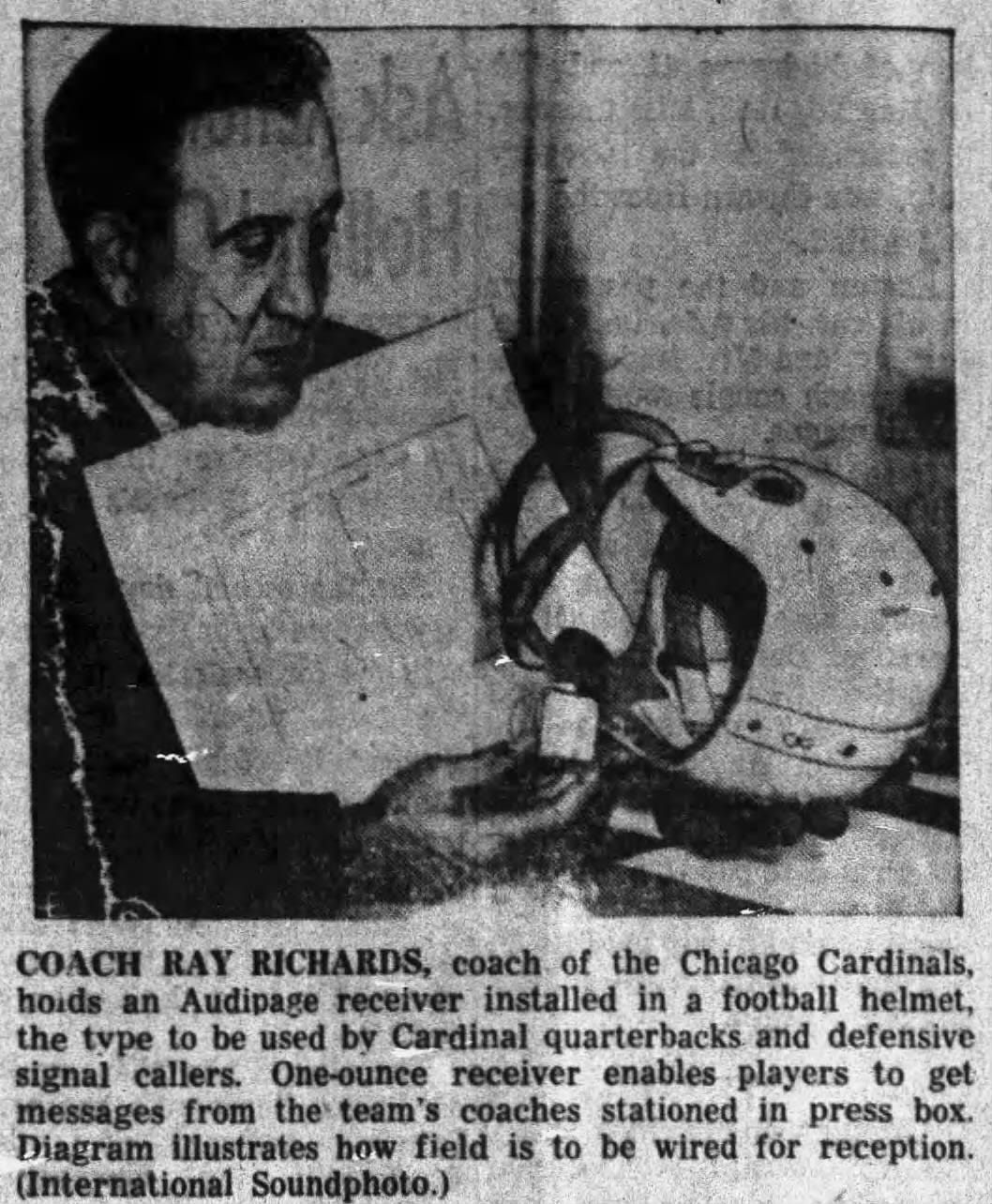Today's Tidbit... Radio Headsets of 1956
College quarterbacks and defensive signal callers in 2024 are allowed to wear helmets with headsets connected to coaches on the sideline, tools the NFL okayed in 1994. Many football fans know that Paul Brown, then the Cleveland Browns coach, implemented radio headsets in 1956 for his team's last two preseason and first three regular season games. Less well-known is that five or six other NFL teams used or invested in similar systems before Commissioner Bert Bell stopped the practice.
This technological innovation entered the airwaves due to George A. Sarles. Sarles was a Browns fan and dictating equipment salesman who enjoyed tinkering with radio receivers. Like many, he noticed that Paul Brown sent plays to his quarterback by substituting guards for each play, which was time-consuming and tiring for the guards, especially in the red zone.
Sarles thought there had to be a better way and began tinkering with his spare radio parts. After struggling to find components small enough to do the trick, he finally succeeded and contacted Paul Brown. He learned Brown had similar thoughts but lacked Sarles' know-how, so the two worked together to finalize the system.
The setup included a handheld microphone for Brown connected to a directional transmitter on the sideline. The transmitter sent a radio signal to a receiver and microphone inside the quarterback's helmet. Using the system required the Browns to license a 4-watt radio station with the FCC with the callsign 19A1661.
The system debuted during the Browns' 17-0 loss to the Detroit Lions in Akron in an exhibition game. Whether other NFL teams knew of the Browns' plans to ride the airwaves before the Lions game is unknown, but syndicated newspaper articles ensured everyone knew the story. The Browns and Sarles were forthcoming with information and images. Some coverage focused on the innovative Browns' space-age approach to football, some on how other teams responded, and others found it amusing.
The Browns had two headset-equipped helmets for each quarterback, George Ratterman and Babe Parilli, yet they still ran into problems. On at least one occasion, the quarterback picked up the radio calls from a local taxi company rather than the coach, but they kept working out the bugs.
Although most NFL coaches in 1956 believed the best play-caller was the quarterback in the huddle rather than a coach on the sideline, teams quickly copied the Browns' idea. The Bears, Lions, and Giants chose not to use the Browns' directional system and used an approach requiring them to bury a wire around the field's perimeter, much like those for a dog's invisible fence. Unfortunately, those were hard to use when playing away from home and worked better near the sidelines than in the middle of the field. The Lions, and perhaps others, chose to use the headsets on the defensive side of the ball rather than or in addition to the offense.
Even a shop teacher at Swampscott High School near Boston got a radio headset system up and running, though high school and college rules of 1956 barred coaching from the sideline then, so the system never saw use.
The final straw may have been the radio wars likely came when the Giants met the Browns in week 3. The Giants had several players they had placed on waivers accompany them to Cleveland. Equipped with a receiver tuned to radio station 19A1661, they listened in on the Browns' signals and yelled what they had learned to the players on the field. The Browns had little success in the first three series of the game before going radio silent the rest of the way.
Bert Bell, the NFL Commissioner, initially took a hands-off approach to the issue, but he changed his mind once Paul Brown became skeptical of the system. Brown told Bell he would willingly give the technology, and as others scrambled with the new technology, Bell ruled that radio headsets would be verboten in the NFL. That meant the Browns' guards returned to running their sideline-to-huddle wind sprints until football teams switched to signaling plays baseball style over the next few years.
Football Archaeology is reader-supported. Click here to buy one of my books or otherwise support the site.







It's weird that arguably the best coach and player the Browns had were named Brown themselves.